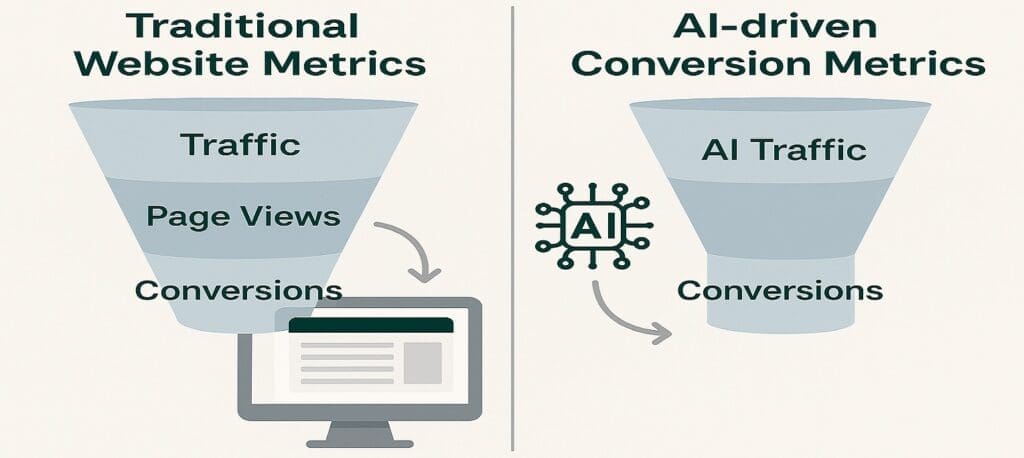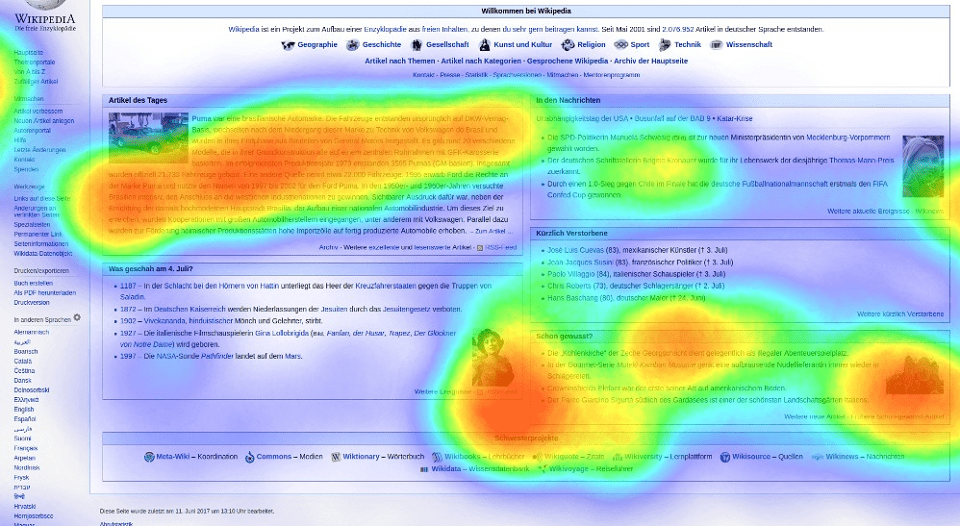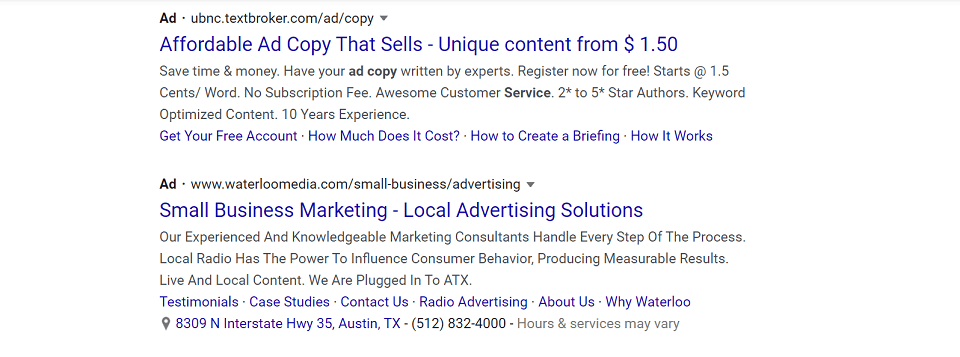A recent Ahrefs study confirmed what many of us working in AI optimization already suspected.
Traffic from AI tools like ChatGPT, Perplexity, and Claude behaves differently, but not worse.
In fact, it performs better.
According to the study, AI traffic converts at rates 11-to-23 percent higher than traffic from traditional search engines.
So why are so many marketers and SEOs panicking about declining pageviews or rising bounce rates from this new channel?
They’re measuring the wrong things.
The Funnel Isn’t Broken. It’s Just Shorter Now
AI users arrive with more context, more intent, and less need for exploration.
They’ve already done their research. The AI did it for them.
By the time they land on your site, they’re not shopping around.
They’re validating, clicking, and converting.
That’s why AI-driven traffic bounces after one-or-two pages. They got what they needed.
That’s not a failure. It’s efficiency.
The time has come for marketers to stop chasing pageviews and start optimizing for decision-ready traffic.
Bounce Rate Is Dead. So Is Session Depth.
AI tools compress the traditional awareness and consideration stages of the funnel.
When users ask questions in ChatGPT or Perplexity, the tools sift through structured content across the web and return a curated summary with links and citations to the most relevant sources.
If your website is one of those sources, you’re ahead.
The link brings in someone who’s already been influenced by your message.
Even if they haven’t read your entire blog post, they’ve seen your key facts, product highlights, or brand voice within the AI-generated output.
By the time they click through, they’ve already decided whether you’re worth their time.
You don’t need them to browse ten pages and a few blog posts. You need them to take action.
Traffic Does Not Equal Success Anymore
As AI tools grow in use, traditional traffic metrics lose value.
Yes, your overall visit count may drop. That doesn’t mean your content or campaigns are failing.
If AI is pulling from your content and citing you, you’re still shaping decisions.
You just won’t see it in your Google Analytics dashboard.
And when that AI-informed traffic does reach your site, they’re much more likely to convert.
Less noise. More signal. That’s the trade marketers should welcome.
This Is Why AEO Matters
Call it AEO. Call it SGO. Call it GEO.
The label doesn’t matter.
The approach is the same:
- Structure your content so LLMs can extract and cite it
- Build credibility with trust signals and clear authorship
- Organize topics around user questions and intent
- Make pages easy to navigate and simple to quote
- Guide visitors to conversion with zero friction
The shift is not coming. It’s already here. You no longer completely control the experience.
And that’s okay.
If you haven’t made AI-based discovery part of your content strategy, you’re falling behind.
Final Thought: Adapt or Get Left Behind
Traffic is a vanity metric. Bounce rate is obsolete.
The real goal is to become the source AI trusts and cites when real people ask real questions.
If you’re not showing up in those answers, you’re not even in the game.
Your competitors are already earning clicks, mindshare, and revenue by embracing this shift.
Answer Engine Optimization is how you catch up. Contact me today and we will get you indexed on the AI platforms, together.
Tommy Landry
Latest posts by Tommy Landry (see all)
- B2B SEO in 2025: Winning Visibility in AI-Curated Buyer Journeys - December 16, 2025
- Local SEO Meets AEO and GEO: How AI Platforms Read Local Authority Signals - December 9, 2025
- What Is an SEO Proposal and What Should It Include? - December 2, 2025





